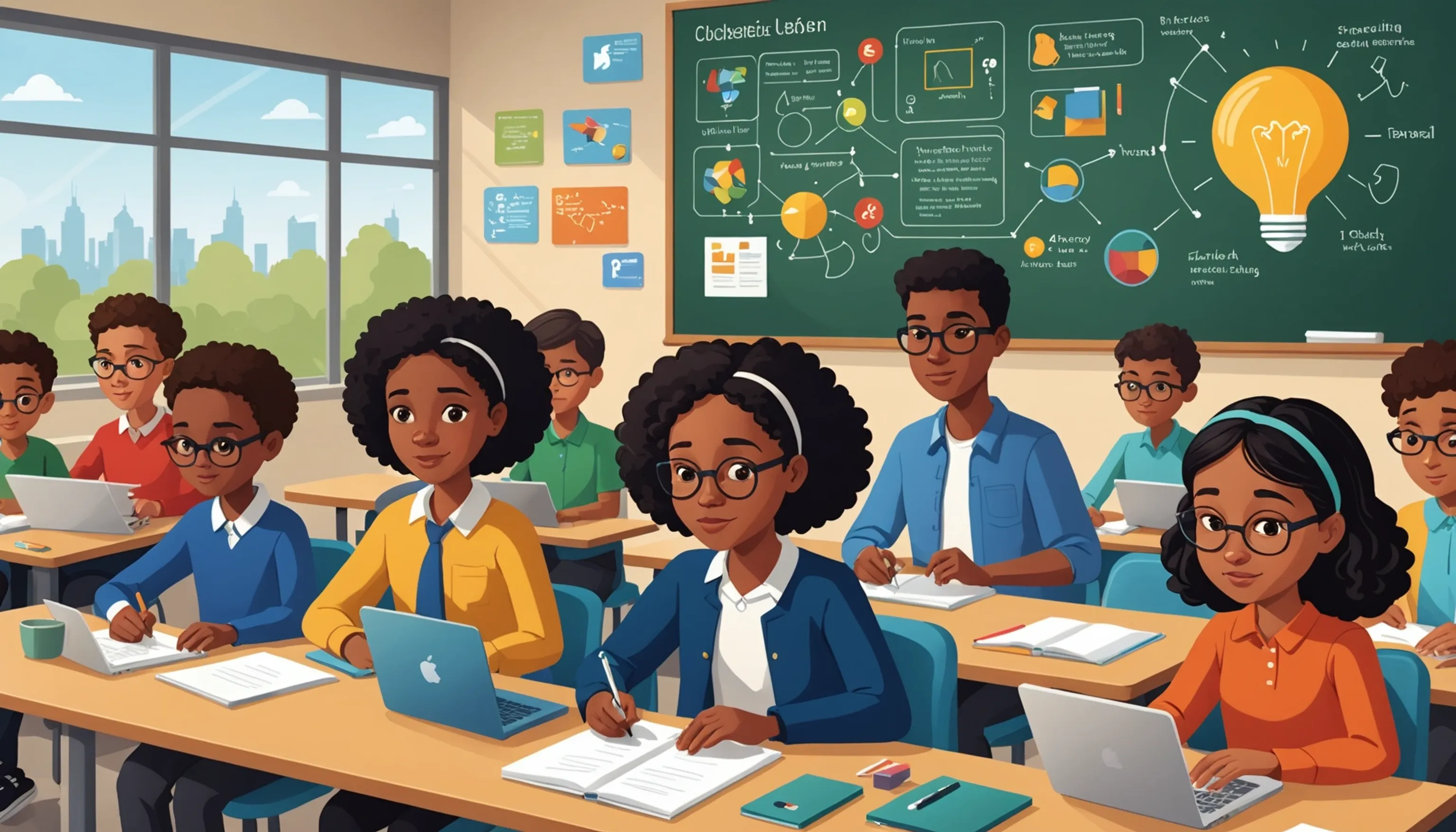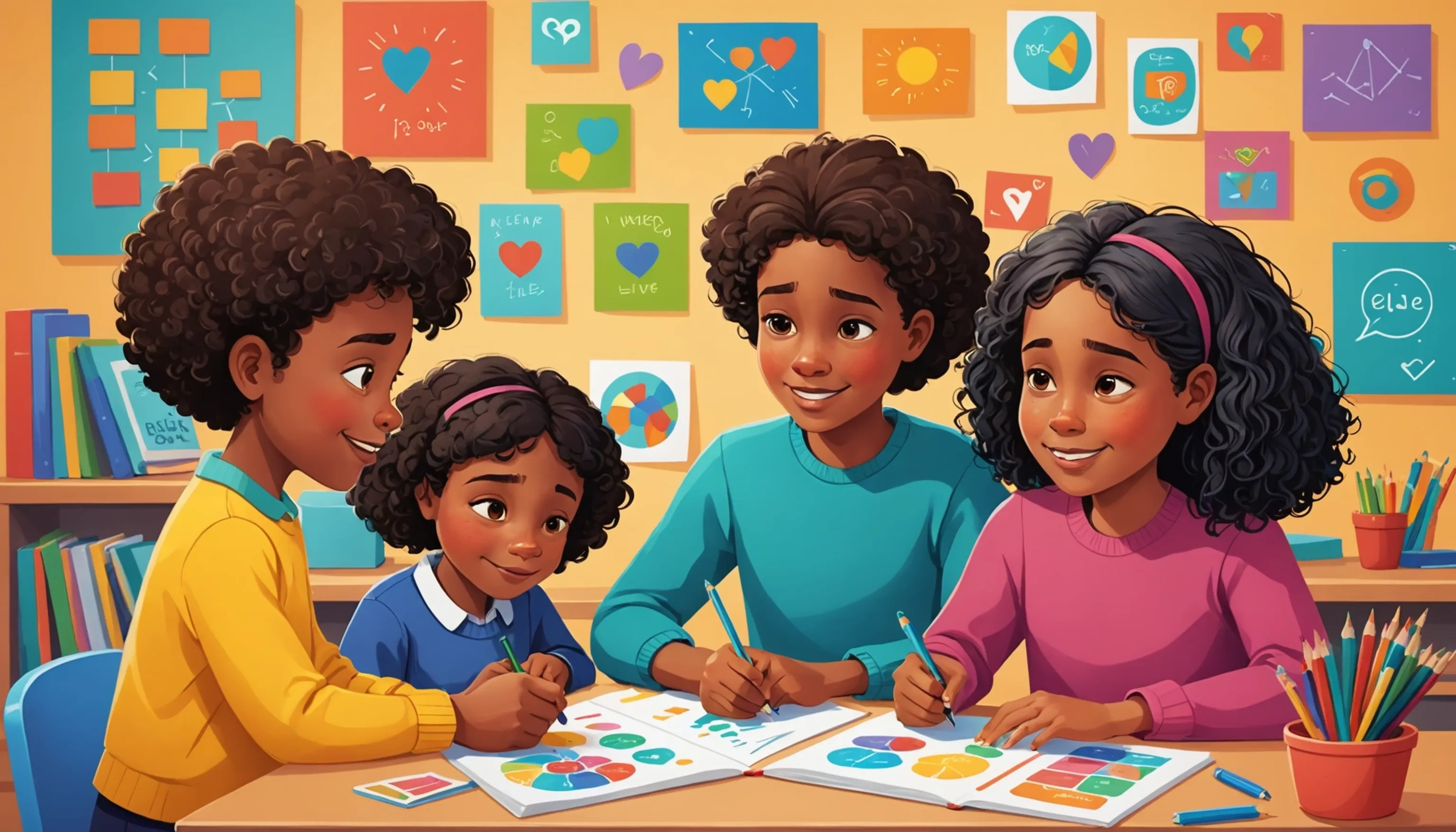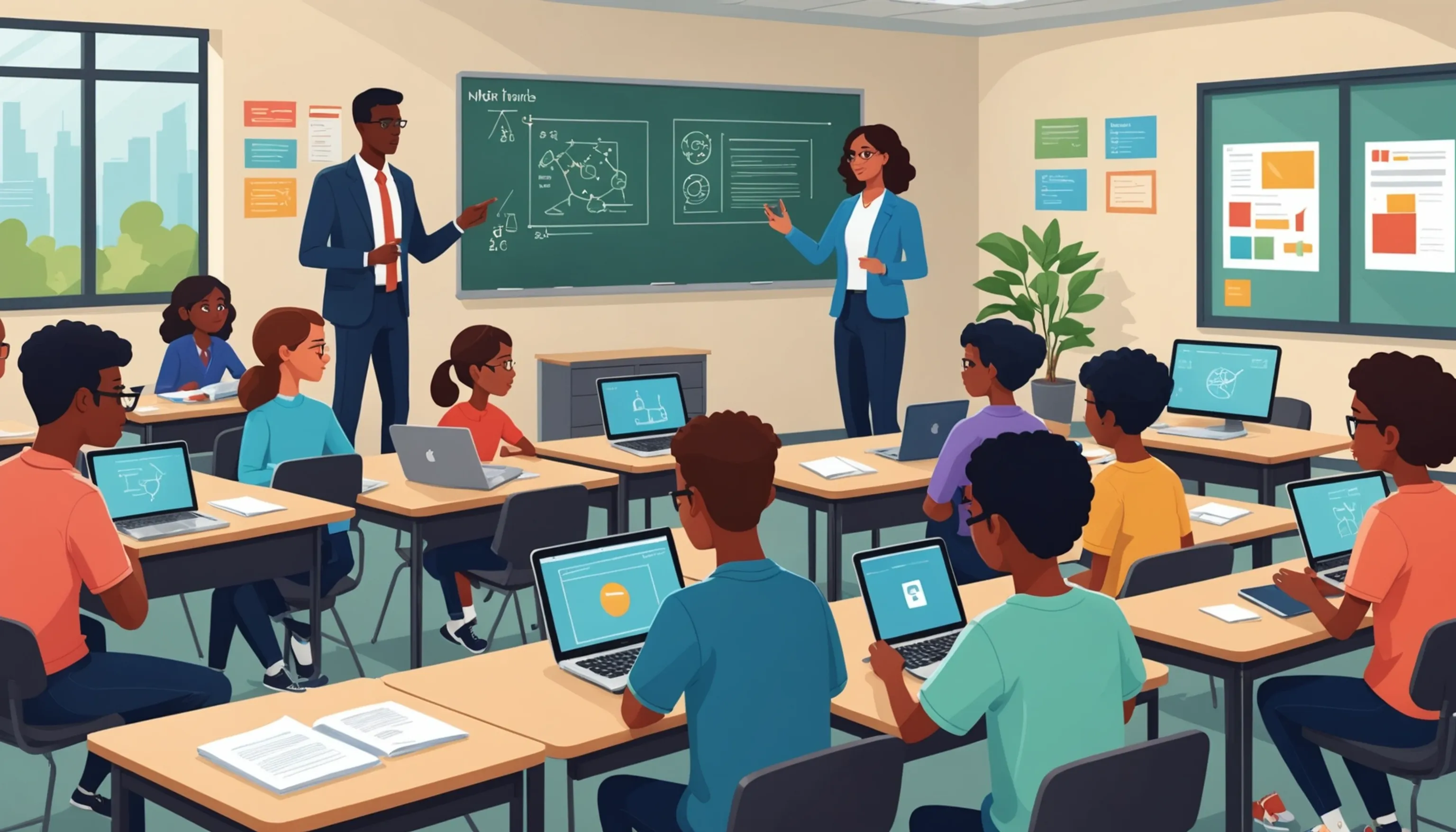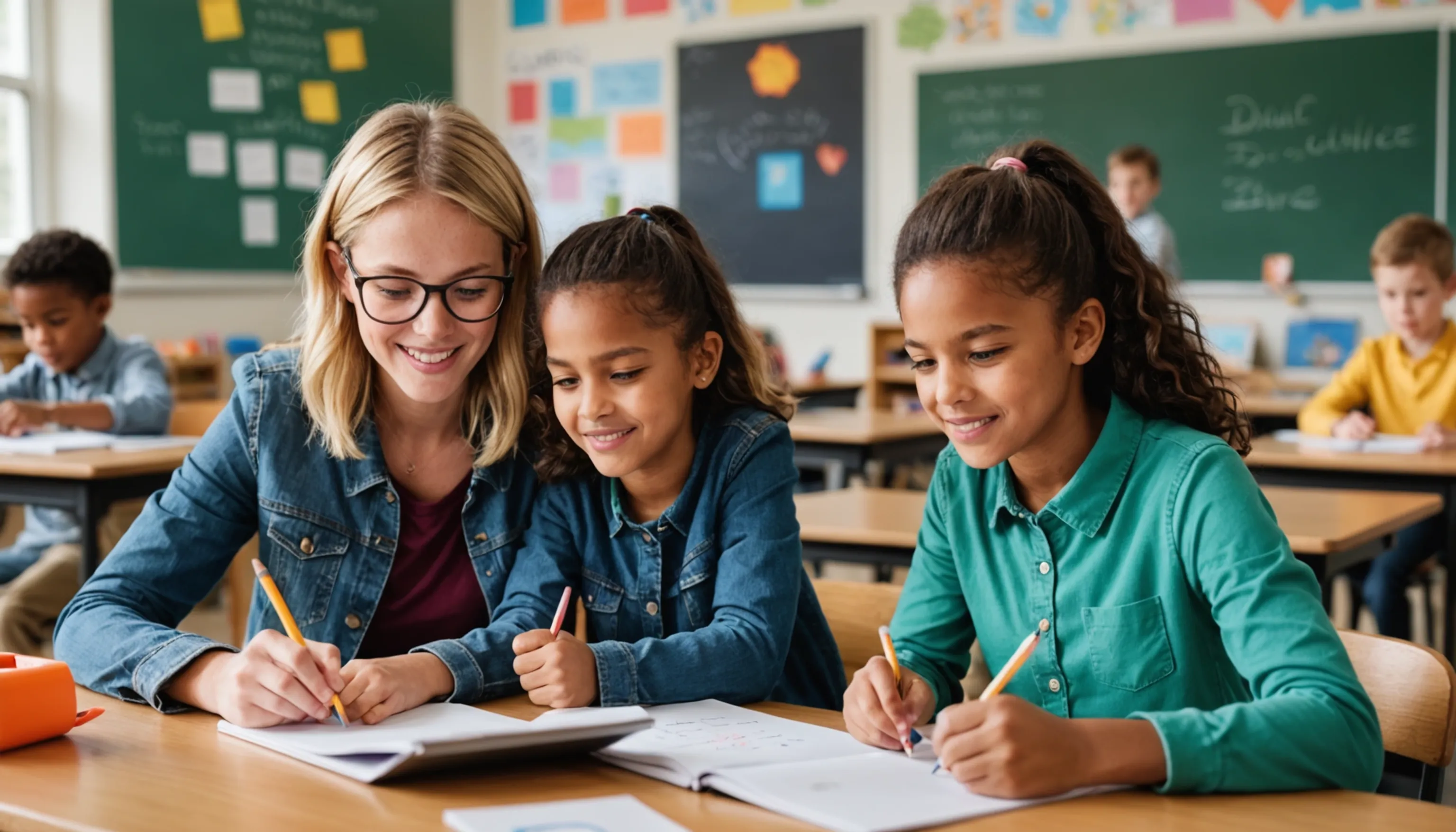Trends in the Future of Learning and Teaching
 HvWHenry van Wagenberg
HvWHenry van Wagenberg
Trends Shaping the Future of Learning and Teaching
The landscape of education is undergoing rapid transformation, influenced by various trends shaping the future of learning and teaching. Key among these is the shift towards personalized learning, which tailors educational experiences to meet individual student needs. Technology plays a pivotal role, with tools like artificial intelligence and online platforms enhancing accessibility and engagement.
Moreover, the integration of social-emotional learning emphasizes the importance of students' emotional well-being, fostering resilience and empathy. As we move towards a more hybrid learning environment, balancing in-person and online education is becoming essential for preparing students for a dynamic future.
The Rise of Personalized Learning
The rise of personalized learning is one of the most significant trends in modern education, transforming the way students engage with their studies. Unlike traditional one-size-fits-all approaches, personalized learning tailors educational experiences to the individual needs, interests, and strengths of each student.
In this approach, educators assess students’ learning styles and preferences, allowing them to create customized learning paths. This can include differentiated instruction, adaptive learning technologies, and flexible pacing, enabling students to progress at their own speed. Research has shown that personalized learning can lead to improved student engagement and academic performance. For instance, a study by the Bill & Melinda Gates Foundation found that schools implementing personalized learning saw a notable increase in student achievement.
Moreover, personalized learning fosters a sense of ownership over the learning process. Students become active participants in their education, setting goals and reflecting on their progress. This can significantly boost motivation and self-efficacy, especially among teenagers who often face unique challenges in their academic journeys.
However, the successful implementation of personalized learning requires adequate training for teachers and access to effective technology. Schools must invest in professional development and tools that support data-driven decision-making to monitor student progress effectively.
In conclusion, as personalized learning continues to gain traction, it is essential for parents and teachers to embrace this shift and support its integration into educational practices, ultimately preparing students for a future where adaptability and individualized learning are key.
Incorporating Technology in the Classroom
Incorporating technology in the classroom has become a vital aspect of modern education, fundamentally transforming teaching and learning experiences. With the increasing availability of digital tools, educators can enhance their instructional methods and engage students more effectively. Technology not only supports traditional learning but also fosters a more interactive and collaborative environment.
One significant benefit of technology integration is the ability to access a wealth of resources and information. Online platforms and educational apps provide students with instant access to a wide range of materials, enabling them to research topics in-depth and collaborate with peers across geographical boundaries. This can lead to a richer learning experience, as students explore various perspectives and ideas.
Additionally, incorporating technology allows for differentiated instruction, catering to the diverse learning styles of students. Tools such as learning management systems (LMS) enable teachers to create personalized learning pathways, offering tailored resources and assessments that meet individual needs.
Interactive tools, like smartboards and educational software, can also make lessons more engaging. These technologies encourage active participation and hands-on learning, which is essential for retaining information. Moreover, gamification elements can motivate students, making learning fun and competitive.
However, it is crucial for educators to receive proper training on effectively using these tools in the classroom. As technology evolves, ongoing professional development ensures that teachers can leverage these advancements to enhance their teaching practices. Ultimately, the successful incorporation of technology prepares students for a future where digital literacy is essential for success.

The Importance of Social-Emotional Learning
The importance of social-emotional learning (SEL) in education cannot be overstated, especially in today's rapidly changing world. SEL focuses on developing students' emotional intelligence, which includes skills such as self-awareness, self-regulation, social awareness, relationship building, and responsible decision-making. These competencies are crucial for fostering a positive and productive learning environment.
Research has consistently shown that integrating SEL into the curriculum can lead to improved academic performance. According to a study published in the Journal of Educational Psychology, students who participate in SEL programs demonstrate higher grades and standardized test scores. This is largely because SEL equips students with the tools to manage stress, collaborate effectively, and communicate their thoughts and feelings.
Moreover, SEL plays a significant role in promoting mental health and well-being. By teaching students how to recognize and manage their emotions, schools can help reduce anxiety and depression rates among teenagers. An emotionally healthy student is more likely to engage in class, build positive relationships, and participate in school activities.
Additionally, SEL fosters a sense of belonging and community within the classroom. When students feel understood and supported, they are more likely to take risks in their learning and contribute to a collaborative atmosphere. This sense of connection is vital for creating an inclusive environment where all students can thrive.
As parents and educators, prioritizing social-emotional learning not only prepares students for academic success but also equips them with essential life skills they will carry into adulthood.
The Shift to Hybrid Learning Models
The shift to hybrid learning models has gained momentum in recent years, blending traditional classroom instruction with online learning components. This approach offers flexibility, allowing students to learn at their own pace while maintaining face-to-face interaction with teachers and peers. Hybrid models cater to diverse learning preferences, accommodating those who thrive in different environments.
Research indicates that hybrid learning can enhance student engagement and motivation, as it incorporates various teaching methods and resources. As education continues to evolve, embracing hybrid learning will be essential for preparing students for a dynamic future.
Benefits of Hybrid Learning
Hybrid learning models offer numerous benefits that can enhance the educational experience for both students and educators. By combining traditional face-to-face instruction with online learning, hybrid models provide a flexible and dynamic approach to education. Here are some key benefits:
- Flexibility: Students can learn at their own pace and choose when and where to engage with the material, accommodating various learning styles and schedules.
- Increased Engagement: The integration of technology and interactive online resources can make learning more engaging. Students are often more motivated when they can participate in diverse activities.
- Personalized Learning: Hybrid learning allows for tailored instruction, enabling teachers to address individual student needs more effectively. This can lead to improved academic outcomes.
- Access to Resources: Online platforms provide students with access to a wealth of educational resources, including videos, articles, and interactive tools, enriching their learning experience.
- Collaboration Opportunities: Hybrid models encourage collaboration among students through online discussions, group projects, and peer feedback, fostering communication skills.
- Preparation for the Future: As workplaces increasingly adopt remote and flexible work arrangements, hybrid learning equips students with essential skills for success in a digital world.
In summary, the benefits of hybrid learning models extend beyond convenience; they promote a more engaging, personalized, and collaborative learning environment, ultimately preparing students for future challenges.

Challenges of Hybrid Learning
While hybrid learning models offer many advantages, they also present several challenges that educators, students, and parents must navigate. Understanding these challenges is essential to maximizing the effectiveness of hybrid education. Here are some key challenges:
- Technological Barriers: Not all students have equal access to technology and reliable internet connections. This digital divide can create disparities in learning opportunities.
- Engagement Issues: Maintaining student engagement can be challenging in a hybrid environment. Some students may struggle to stay focused during online lessons, leading to lower participation rates.
- Classroom Management: Teachers may find it difficult to manage a classroom with both in-person and remote learners simultaneously. Balancing the needs of both groups requires careful planning and adaptability.
- Assessment Challenges: Evaluating student performance in a hybrid setting can be complicated. Teachers need to develop fair and effective assessment methods that account for the different learning environments.
- Training for Educators: Not all educators are equipped with the skills necessary to implement hybrid learning effectively. Ongoing professional development and training are crucial for teachers to adapt to this model.
- Social Interaction: Hybrid learning may limit opportunities for social interaction among students, which can affect their emotional well-being and sense of community.
By addressing these challenges head-on, schools can create more effective hybrid learning environments that support both student learning and well-being.
Preparing for a Hybrid Future
Preparing for a hybrid future in education requires a proactive approach from schools, educators, students, and parents. As hybrid learning becomes more prevalent, stakeholders must adapt to ensure effective implementation. Here are some key strategies for preparation:
- Invest in Technology: Schools should prioritize investment in reliable technology and infrastructure to support both in-person and online learning experiences.
- Professional Development: Ongoing training for educators is essential. Teachers need to develop skills in using digital tools and managing hybrid classrooms effectively.
- Create Flexible Curricula: Curricula should be adaptable, allowing for seamless transitions between in-person and remote learning, ensuring all students can access quality education.
- Foster Communication: Open lines of communication between parents, teachers, and students are crucial for addressing concerns and maintaining engagement.
By embracing these strategies, the education system can effectively prepare for a future that blends traditional and digital learning.
Skills for Future-Ready Students
In an ever-evolving educational landscape, equipping students with the right skills is essential for their success in a future characterized by rapid technological advancements and changing job markets. Here are some key skills that are crucial for future-ready students:
- Critical Thinking: Students must develop the ability to analyze information, evaluate different perspectives, and make informed decisions. Critical thinking enables them to solve complex problems effectively.
- Collaboration: As workplaces increasingly prioritize teamwork, students should learn to work collaboratively with diverse groups, both in-person and online. Effective communication and interpersonal skills are vital.
- Digital Literacy: Proficiency in using technology is crucial. Students should be adept at navigating digital tools, understanding online safety, and utilizing resources for research and learning.
- Adaptability: The ability to adapt to new situations and challenges is essential. Future-ready students should embrace change and remain open to lifelong learning.
- Creativity: Encouraging creative thinking allows students to innovate and approach problems from unique angles, fostering an entrepreneurial mindset.
By focusing on these skills, educators can prepare students to thrive in an increasingly complex world, enabling them to succeed in future careers and contribute positively to society.
The Role of Parents and Teachers in Future Education
The role of parents and teachers in shaping the future of education is more critical than ever as we navigate new learning environments. Both parties play a vital role in fostering student success and adapting to the evolving educational landscape.
Parents are essential partners in education. They provide support and encouragement, helping to create a positive learning environment at home. By engaging in their children's education, parents can:
- Encourage Lifelong Learning: Demonstrating curiosity and a love for learning can inspire students to pursue knowledge actively.
- Communicate Openly: Maintaining open lines of communication with teachers allows parents to stay informed about their child's progress and any challenges they may face.
- Support Learning at Home: Providing resources, such as books and educational materials, reinforces classroom learning and fosters a productive study routine.
Teachers, on the other hand, are the driving force behind effective education. They must:
- Adapt Instruction: Embrace diverse teaching methods, including technology integration and personalized learning, to meet the unique needs of each student.
- Build Relationships: Establishing strong connections with students fosters trust, encouraging engagement and participation.
- Encourage Collaboration: Creating opportunities for students to work together enhances their interpersonal skills and prepares them for future teamwork.
By working together, parents and teachers can create a nurturing educational environment that prepares students for success in an increasingly complex world.
